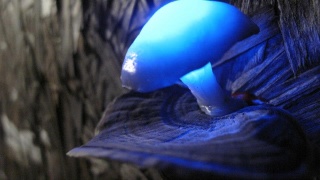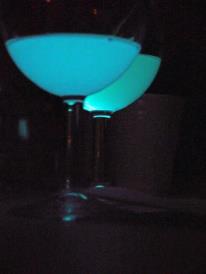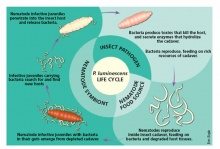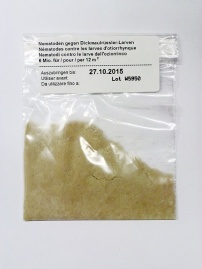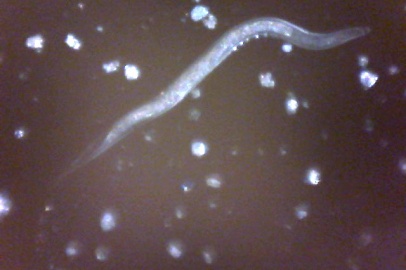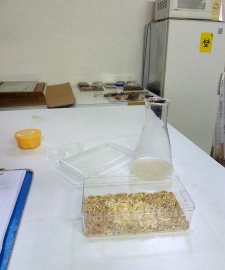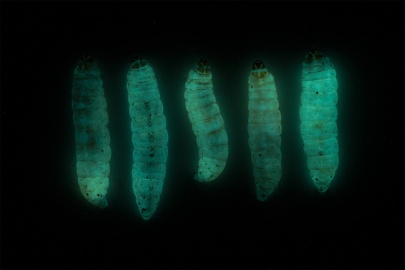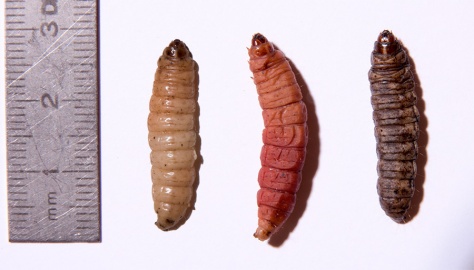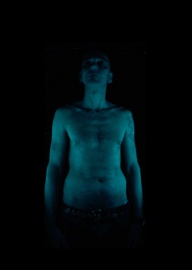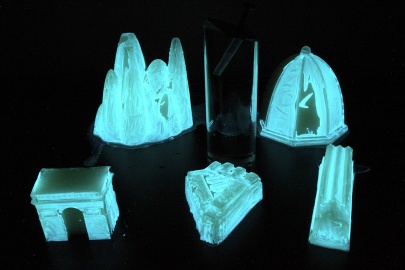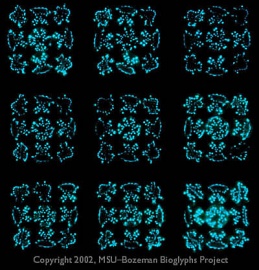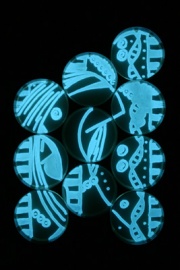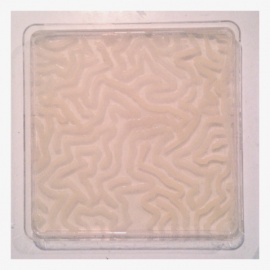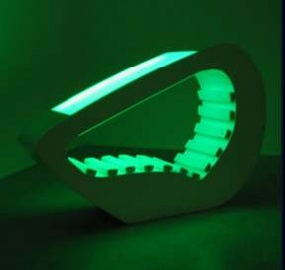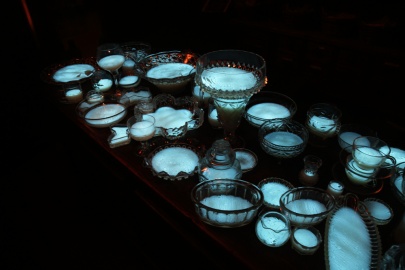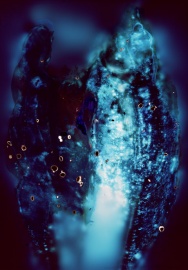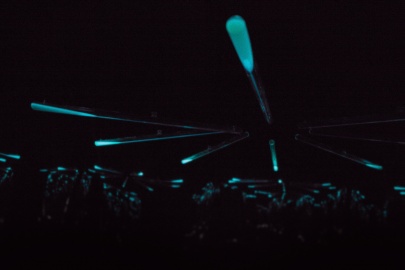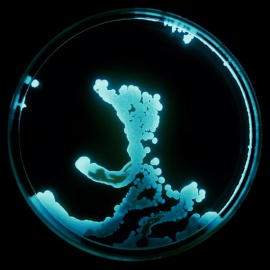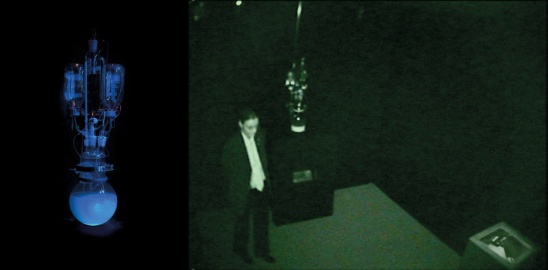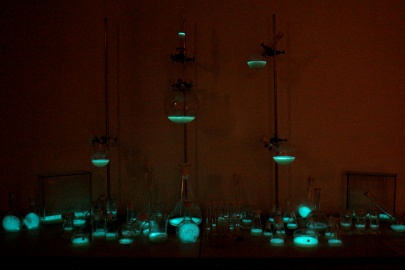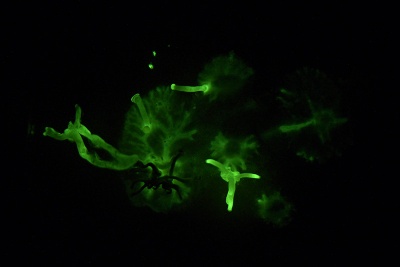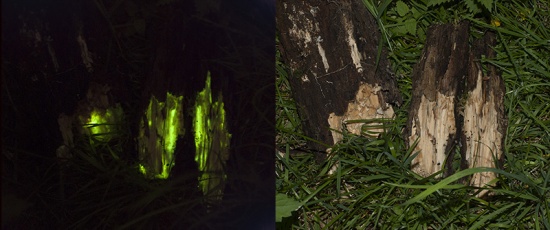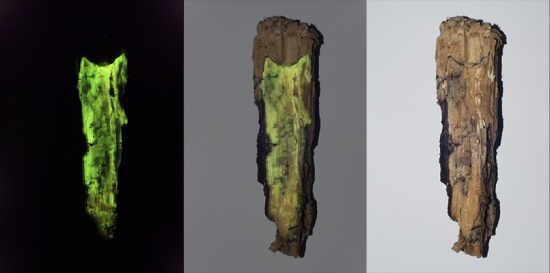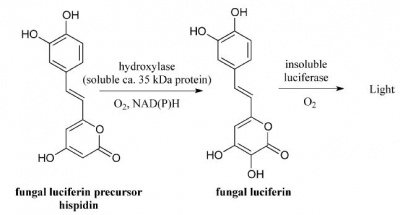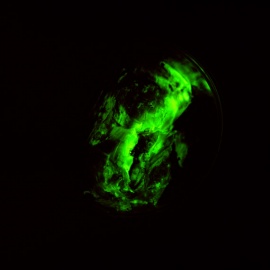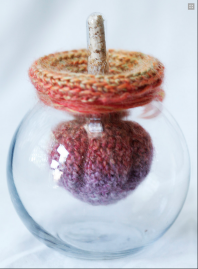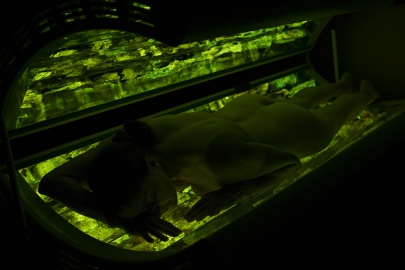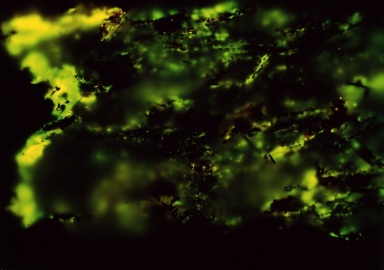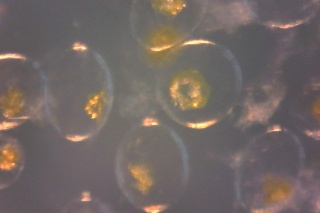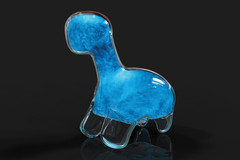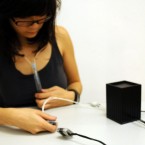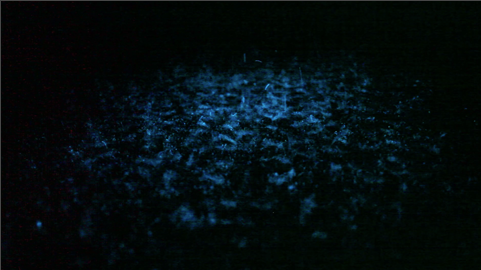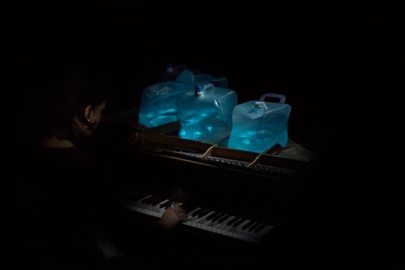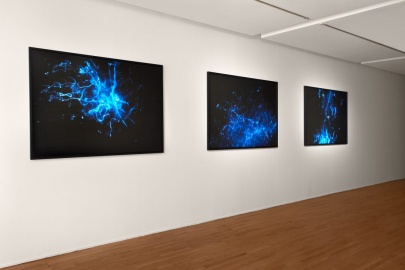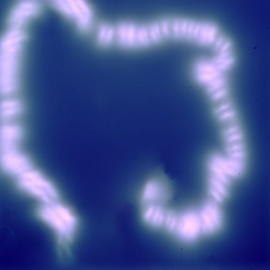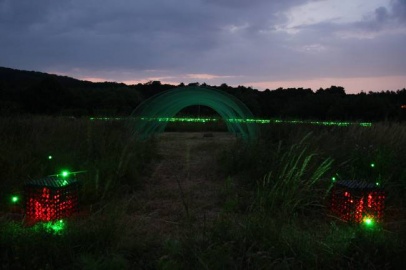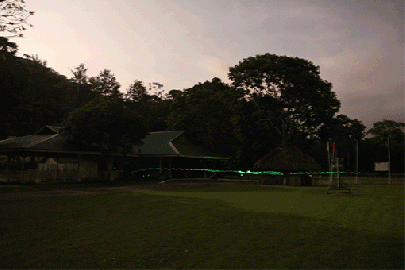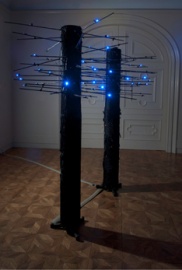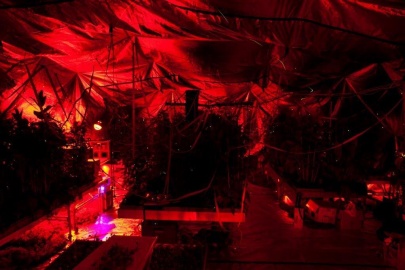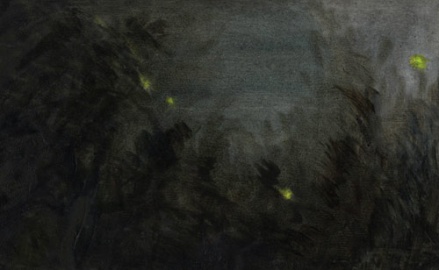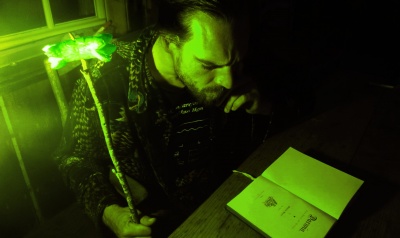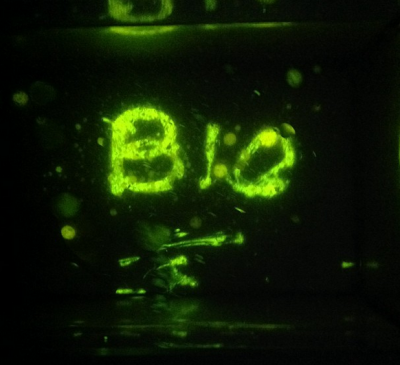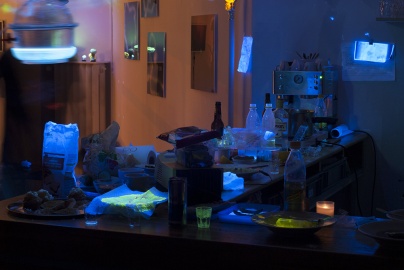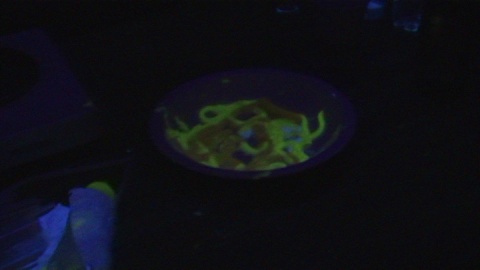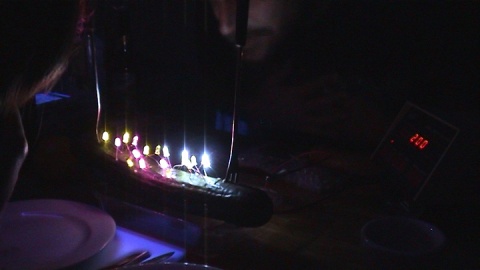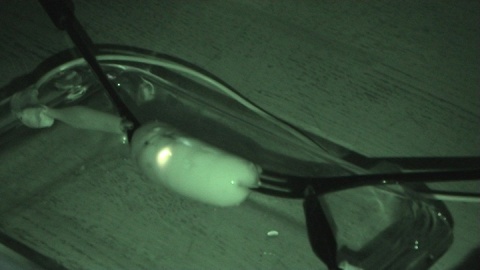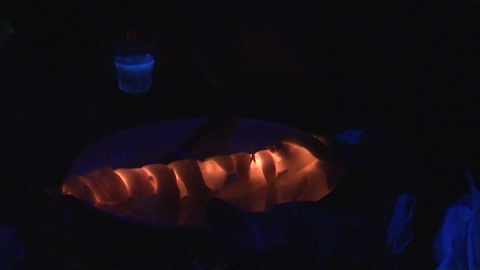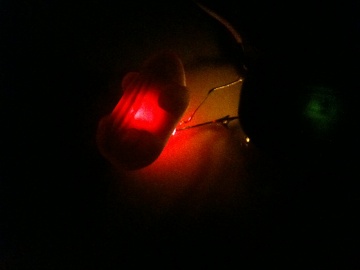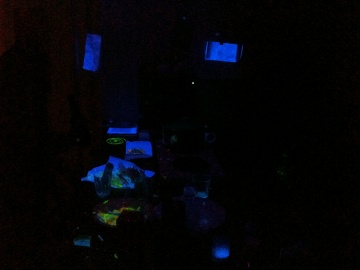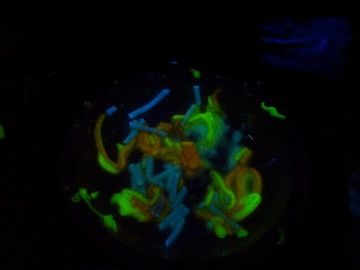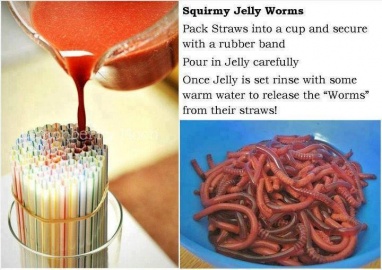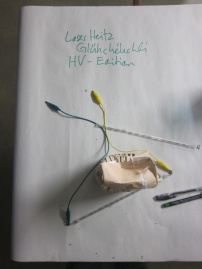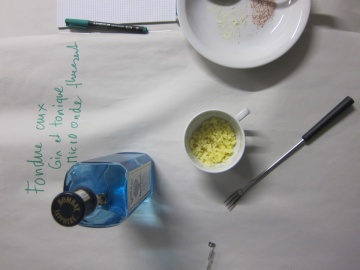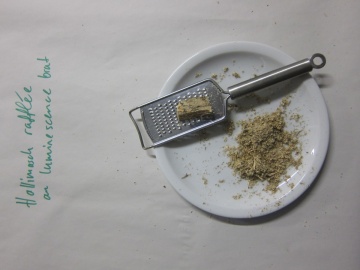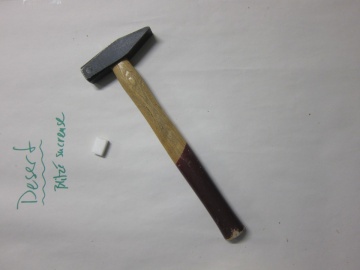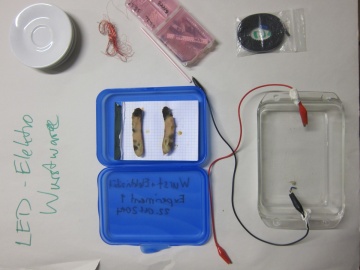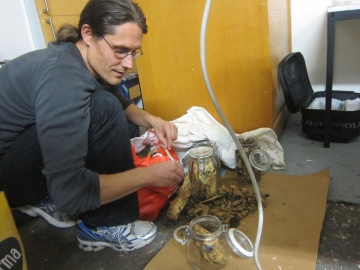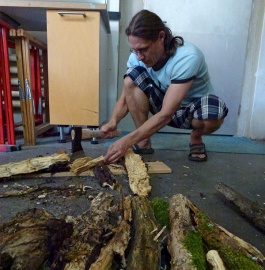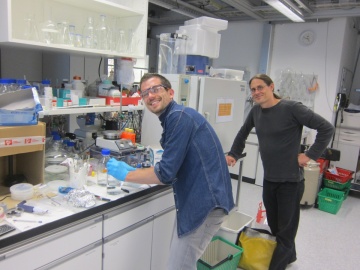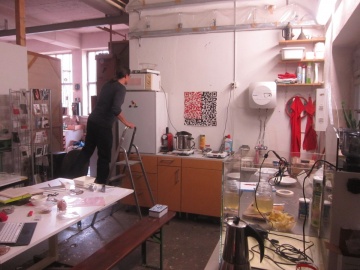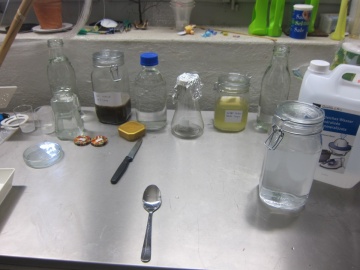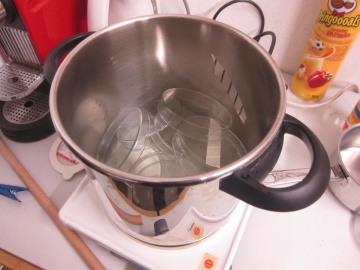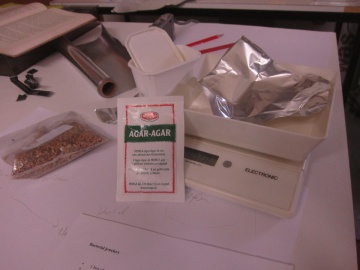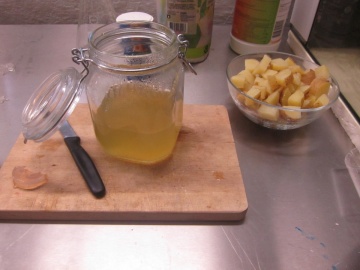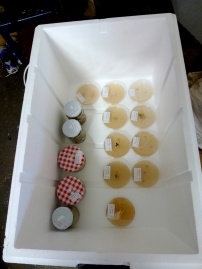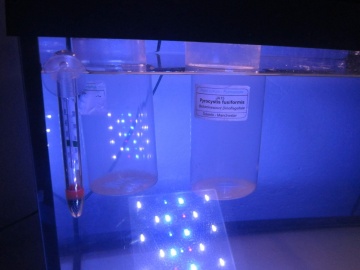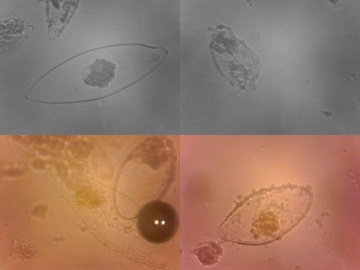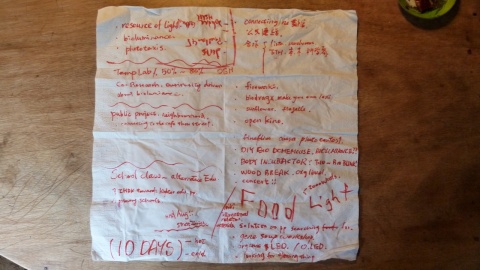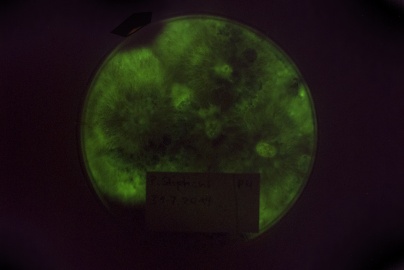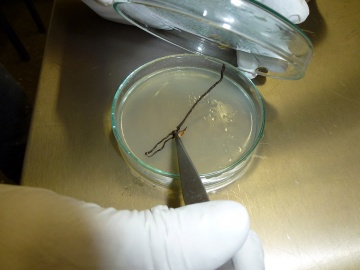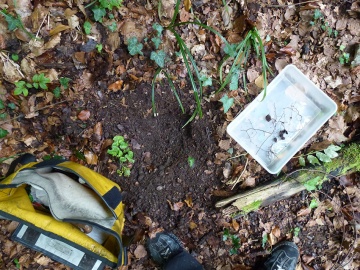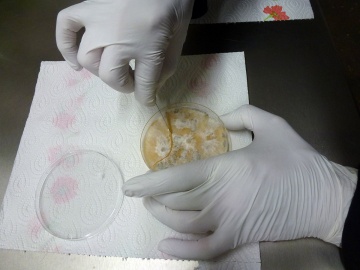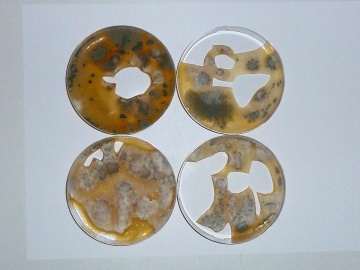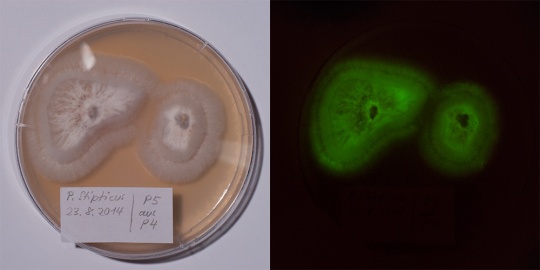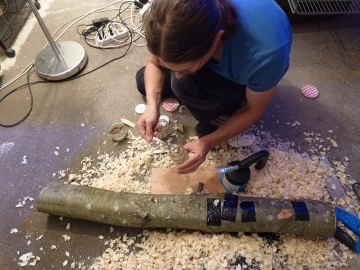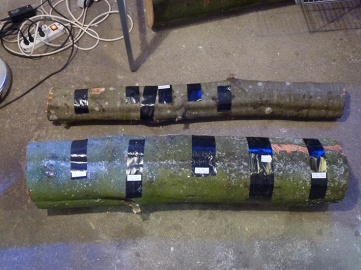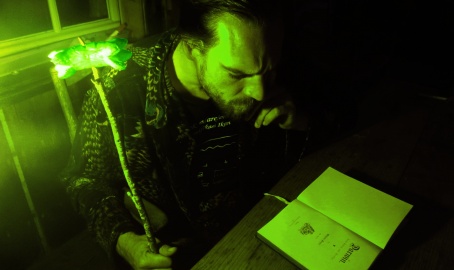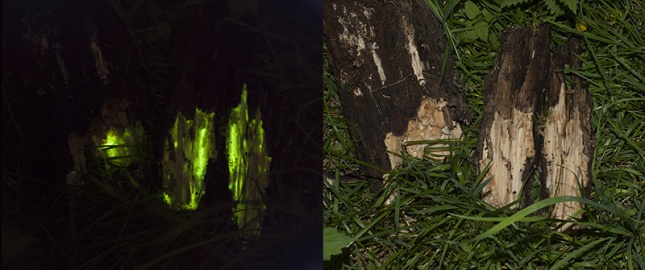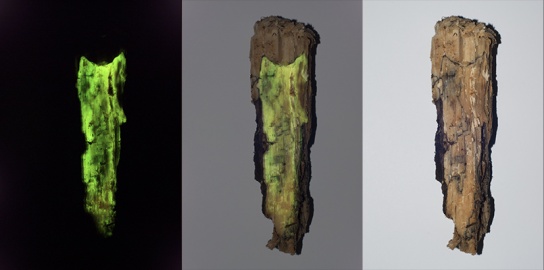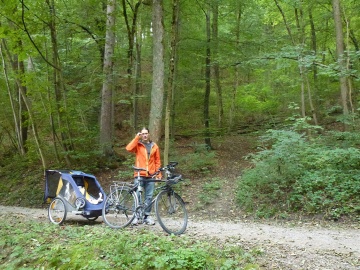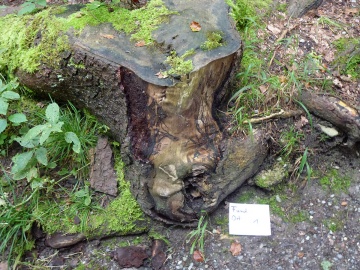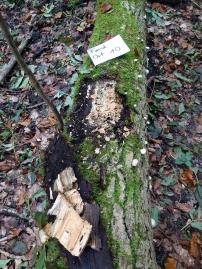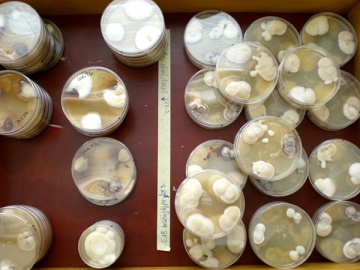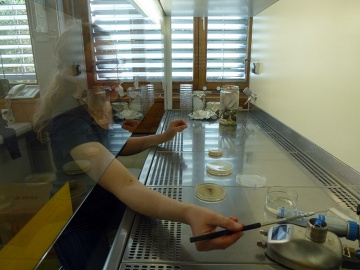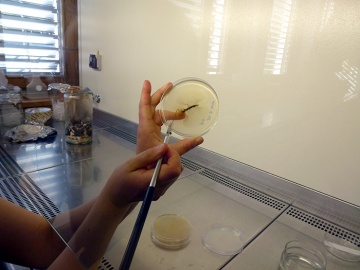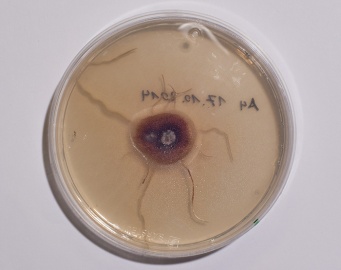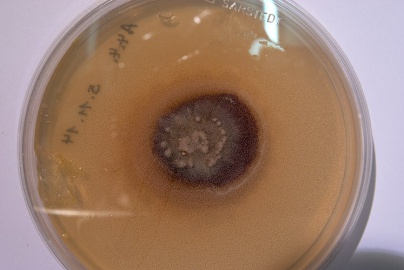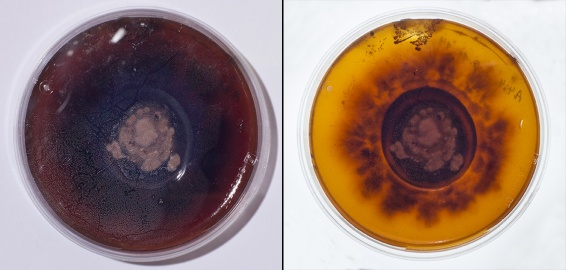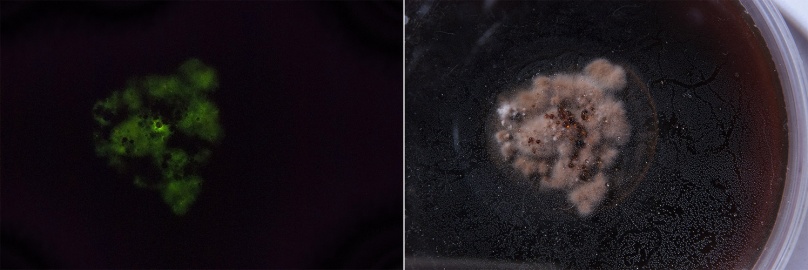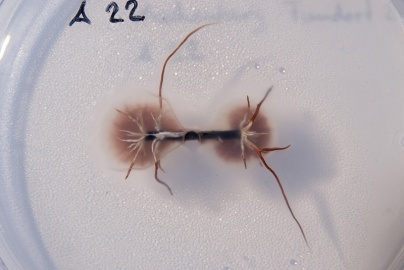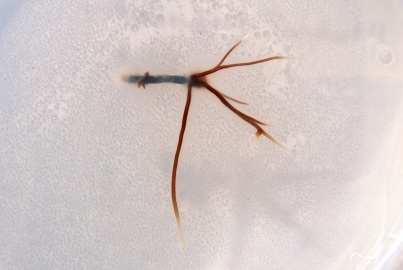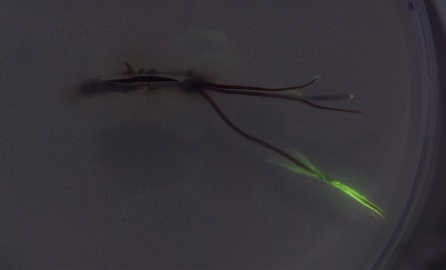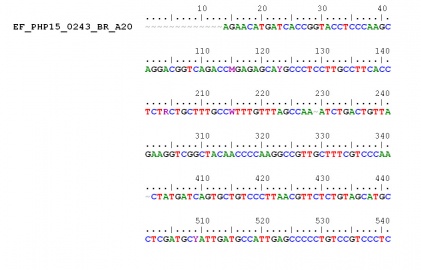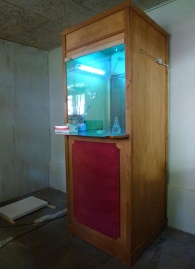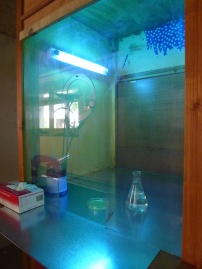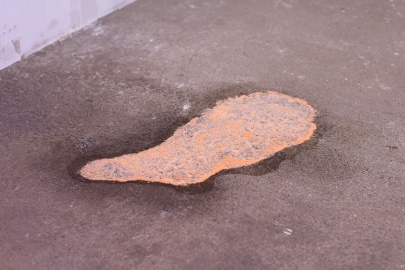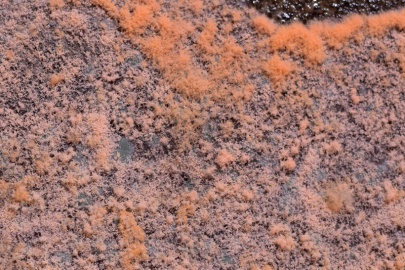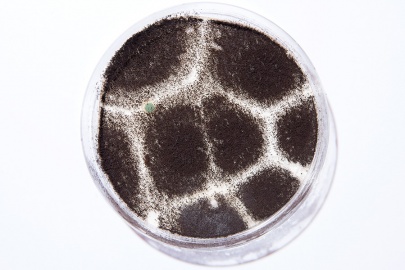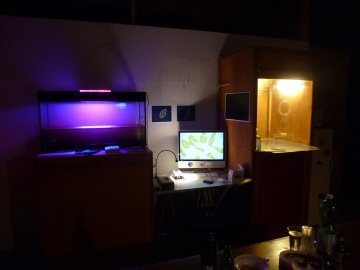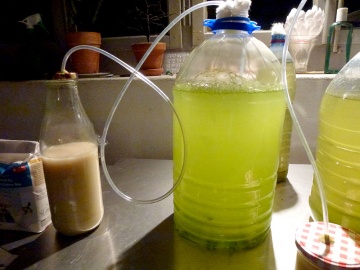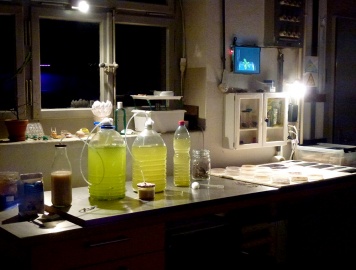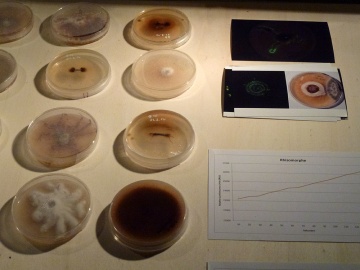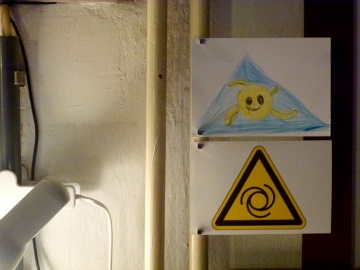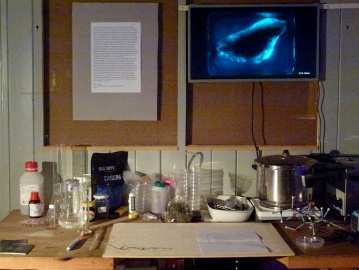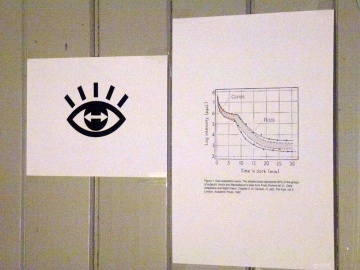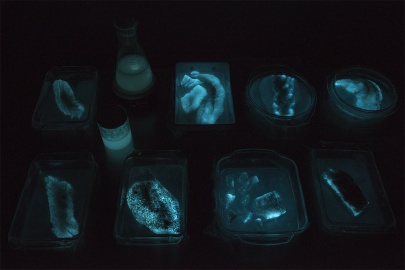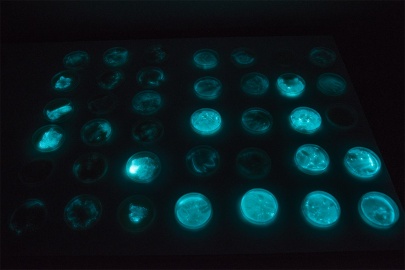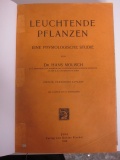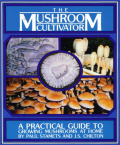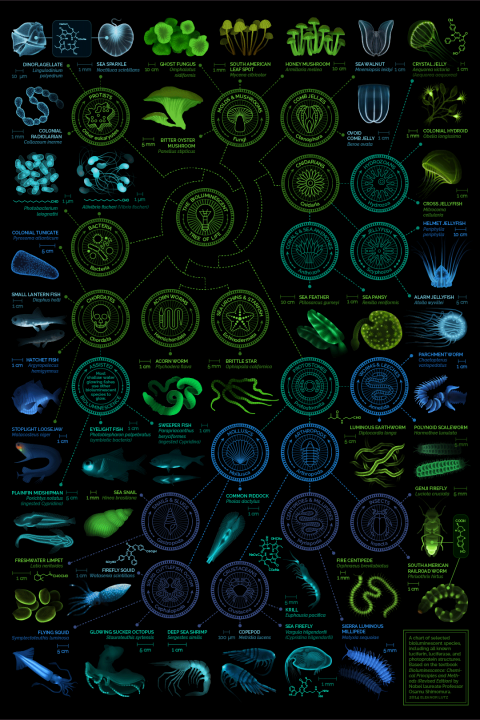Explorations in BioLuminescence
From fireflies to stinky squids... the future is bright
Contents
- 1 GENERAL INTRODUCTION
- 2 LUMINOUS BACTERIA
- 3 GLOW SHROOMS
- 4 BIOLUMINESCENT ALGAE
- 5 HACKING FIREFLIES
- 6 DIY BIOLUMINESCENT DORMICE
- 7 Glowing Mouse in HEL
- 8 Make your own GlowSticks
- 9 Glowing Wurst
- 10 Other experiments
- 11 GLOWING FOOD EXPERIMENTS
- 12 LUMINOUS WORKSHOPOLOGY
- 13 TOWARDS A MINI CITIZEN SCIENCE FESTIVAL IN ZURI
- 14 OTHER LINKS AND REFERENCES
GENERAL INTRODUCTION
Bioluminescence is visible light made by living creatures. Such creatures are rare on land but extremely common in the oceans. see more on Marine Bioluminescence by BioScience | Explained here: File:BiolumEN.pdf
Read more here: http://www.quantum-immortal.net/physics/biolum.php
Bioluminescence is not the same as phosphorescence
Even though Steinbeck, Hemmingway and even Darwin referred to the “phosphorescence of the sea” this is a literary rather than a scientific description. Phosphorescence is the delayed emission of light from a source that has been excited by light. Examples include glow-in-the-dark paints and toys.
Bioluminescence is not the same as fluorescence
As with phosphorescence light emission is stimulated by light not by a chemical reaction. With fluorescence the excitation wavelength is always shorter, that is, higher energy, than the emission wavelength and emission ceases as soon as the excitation source is turned off. Some of this confusion may have arisen because some, but not all, luciferins are fluorescent and a few pass their excitation energy along to fluorescent proteins like GFP.
LUMINOUS BACTERIA
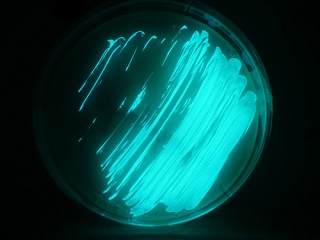
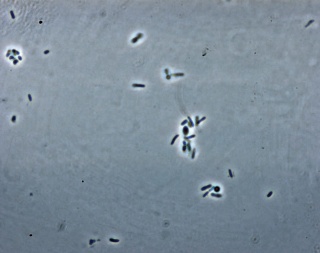
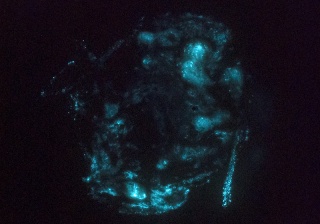
At present, light-emitting bacteria are found in approximately 25 species of five genera in three families of Gammaproteobacteria: Shewanella (Shewanellaceae), Photorhabdus (Enterobacteriaceae), and Vibrionaceae (Aliivibrio, Photobacterium, and Vibrio) (Dunlap & Kita-Tsukamoto, 2006; Ast et al., 2009; Dunlap, 2009; Yoshizawa et al., 2009a, b).
Members of seven Photobacterium species produce luminescence: Photobacterium angustum (certain strains), Photobacterium aquimaris, Photobacterium damselae (certain strains), Photobacterium kishitanii, P.leiognathi, Photobacterium mandapamensis, and P.phosphoreum.
Vibrio fischeri (Beijerinck 1889) got a new reclassification from genus Vibrio to the newly created Aliivibrio in 2007. Source: Phylogeny, genomics, and symbiosis of Photobacterium Henryk Urbanczyk, Jennifer C.Ast and Paul V.Dunlap
Isolation of luminous bacteria from fish or squid
from bioScience | Explained, download File:BioSci expl PhotoLumen.pdf
P. phosphoreum is one of the commonest spoilage organisms of fish such as cod. It is not known to cause disease, but there are reports of people being startled by glowing fish fingers in the fridge!
To isolate glowing bacteria from fish, obtain a freshly-caught seafish or squid. It is very important that the fish has not been frozen or washed in fresh water. It is also better if the fish has not been stored on ice. (That‘s what you usually find everywhere on the Internet. But you can buy almost any saltwater fish fillet from the counter and you will be able to isolate glowing bacteria.) Place the fish in a container with 3% NaCl solution. The liquid should be deep enough to come half way up the fish.
Cover the container and store the fish for 24 hours at about 12–15 °C. Note: if this temperature is difficult to achieve, place the fish in a fridge at about 4 °C for 48–72 hours.
After incubation, take the container with the fish into a dark room. When your eyes have been adopted to dark, light spots will be visible on the skin of the fish. Use a sterile toothpick or disposable sterile loop or needle to aseptically transfer the brightest spots onto sterile fish enrichment agar plates. Tip: some people find it useful to use a dim red lamp (e.g., a photographic safety lamp) for this step. Turn the fish away from the lamp so that the glowing colonies are in the shade and therefore visible.
Transfer the cultures to new agar plates every second day if you are incubating them at temperatures around 12 °C or once a week if you are storing them in a fridge. P. phosphoreum will grow at 4 °C; V. fischeri will not. By selecting the brightest colonies when inoculating, it should be possible to isolate a pure culture.
Fish enrichment medium
- Boil 250 g fish meat in 1 l of water.
- Add 30 g NaCl and sieve to remove solids.
- Add 10 g peptone, 10 ml glycerol and 1 g yeast extract.
- Adjust the pH to 7.
- Autoclave at 121 °C for 15–20 minutes.
For a solid medium add 15–20 g of agar to every litre of broth.
Safety note
Several species of Vibrio are pathogenic. The chances of inadvertently isolating pathogens in this procedure can be reduced by using at least 3% salt solution and incubating fish and plates at no more than 15 °C. Human pathogens are unlikely to grow under such conditions.
Photorhabdus luminescens
Photorhabdus luminescens (sometimes called Xenorhabdus luminescens) is a bioluminescent microbe and lives in symbiotic relationship with soil entomopathogenic nematodes(family: Heterorhabditidae).
- Domain: Bacteria
- Phylum: Proteobacteria
- Class: Gammaproteobacteria
- Order: Enterobacteriales
- Family: Enterobacteriaceae
- Genus: Photorhabdus
- Species: luminescens
Draft Genome Sequence of Photorhabdus luminescens Strain BA1
Photorhabdus luminescens bacteria live in Nematodes and produce a toxin that is pathogenic for many insects. The nematodes infect insect larvae and kill them with the toxin. In the insect larvae, the bacteria excrete next to the fatal toxin also an antibiotic substance to prevent invasion of the insect by bacterial or fungal competitors, and a luminescent protein that causes a faint glow in the infected insect remains.
For a detailed description see these two websites:
- From MicrobeWiki
- Max-Planck-Forscher entschlüsseln, wie Fadenwürmer und Bakterien gemeinsam Jagd auf Insektenlarven machen
There have been some reported cases of human infection by Photorhabdus luminescens. Stories from the American Civil War and the First World War tell of soldiers with wounds that glowed in the dark. Their fluorescing tissues appeared to heal more cleanly and more quickly than the unilluminated wounds of their counterparts. This mysterious phenomenon became known as the „Angel’s Glow“. The afflicted soldiers had no idea that the glow was caused by a beneficial bacterial infection and instead interpreted it as the gift of survival from God, handed to them by angels, hence the name.
Nematodes are used as pesticides in organic farming; so for orchards, for young vines and ornamental plants, against the black vine weevil and the garden chafer. In Switzerland you can easily buy such nematodes at coop and migros.
Pictures by: Baggenstos/Rudolf
Further links P. Luminescence
A very good Investigation on the bacterium Photorhabdus luminescens from Jürg M. Grunder:
- Dissertationen: Photorhabdus luminescens als Symbiont insektenpathogener Nematoden. (1997)
- Abstract:
- Nematoden und Bakterien in obligater Symbiose
- http://www.wormbook.org/chapters/www_genomesHbacteriophora/genomesHbacteriophora.html
Art / Design / Products using luminous bacteria
- Simon Park - Exploring the invisible
- Bioglyphs
- Hunter Cole
- Rebecca Klee
- Kathy M. Takayama
- Anne Brodie
- Tim Otto Roth
- Teresa Van Dongen
- Marianne Engel
- Thomas Feuerstein
- Anna Dumitriu
Bioluminescent Cities Simon Park
from Bioglyphs
Thomas Feuerstein Unmarked Space Oddity, 2007
Anna Dumitriu in collaboration with Dr Simon Park and Alex May Bacteria Light Lab, 2015
Further links
GLOW SHROOMS
For various recipes on making agar growth plates check Agar is the Media
A full description of ideal growth conditions has been publisher here http://jresearchbiology.redolences.com/documents/RA0190.pdf
Influence of culture conditions on mycelial growth and luminescence of Panellus stipticus
IB Prasher, VC Chandel, AS Ahluwalia - Journal of research in Biology (2012) 3: 152-159
ABSTRACT:
Panellus stipticus (Bull.) P. Karst, a naturally bioluminescent tropical fungus, has been studied in vitro for the optimum culture conditions viz culture media, temperature, pH and days of incubation required for luminescence. Temperature and pH affect growth and bioluminescence to a great extent. Glucose-peptone medium has been found to be the best for optimum mycelial growth as well as luminescence. The fungus exhibits luminescence at 20-24°C. The maximum mycelia dry weight (mg/25ml of the basal media) and luminescence observed at pH 4.0. The fungus exhibits luminescence after eight days of incubation at 24°C and pH 4.0, whereas it intensified to maximum after 13 days of incubation (pH 4.0 and temperature 24°C).
tips for Shroom Cultures
- bags: sterilizable bags
- Recipes: Agar Medium
GLOWING WOOD
Glowing Wood is a bioluminescence phenomenon caused by a fungus. Some fungi have the ability for bioluminescence and one of them is Armillaria.
Armillaria --> Honey fungus, or Hallimasch (German) or оpenky (Ukrainian) is a genus of parasitic fungi that live on trees and woody shrubs. It includes about 10 species formerly lumped together as Armillaria mellea. It is known to be one of the largest living organisms, where scientists have estimated a single specimen (of the species Armillaria solidipes) found in Malheur National Forest in Oregon to have been growing for some 2,400 years, covering 3.4 square miles (8.4 km²). Some species of Armillaria are bioluminescent and may be responsible for the phenomena known as „foxfire“ and perhaps „will o‘ the wisp“. wikipedia.org
Die Gattung „Hallimasch“ (Armillaria) zählt zur grossen Klasse der Ständerpilze (Basidiomycetes). Innerhalb dieser Gattung gehört Armillaria zur Ordnung der Blätterpilze (Agaricales).
Actually Armillaria is known as a common tree pest, because it means certain death for the infected trees.
Das Licht, das Pilze zum Leuchten bringt entsteht durch eine chemische Reaktion in den Zellen, dabei reagiert Luciferin mit Sauerstoff und gibt ein Lichtteilchen ab, ein Photon. Das für diesen Prozess verantwortlichen Molekül ist bei Raumtemperatur instabil, und in Kontakt mit Licht zerfällt es sofort. —> Weshalb der Hallimasch im Dunkeln leuchtet - Von Atlant Bieri 2011
Schon lange versuchten Wissenschaftler die Struktur des Moleküls Luciferin, das Pilze zum Leuchten bringt, herauszufinden. Denn die „Leuchtsubstanz“ von Pilzen unterscheidet sich gänzlich von dem der Glühwürmchen. Im Sommer 2015 gelang es einem Forscherteam aus Krasnoyarsk, Moscow und Nagoya das Puzzle zu lösen.
A team of Russian and Japanese scientists has now unravelled the previously unknown chemistry responsible for the glowing fungi. The team was able to identify the luciferin precursor as hispidin, a fungal metabolite known to be a strong antioxidant. What makes a fungus able to luminesce isn't hispidin alone; it is the ability to produce the two enzymes necessary for bioluminescence. The researchers were able to extract these two enzymes from the biomass of luminescent fungi: The first is hispidin-3-hydroxylase, which converts hispidin to the actual luciferin, 3-hydroxylhispidin, by means of a hydroxylation reaction that also involves NADPH. -> Fungi get the green light: Chemical basis for bioluminescence in glowing fungi uncovered
The Chemical Basis of Fungal Bioluminescence Press-Information Abstract
Historic examples
Used as lighting for early submarines http://en.wikipedia.org/wiki/American_Turtle
"Six small pieces of thick glass in the top of the submarine provided natural light.[5] Illumination while submerged was provided by a piece of cork that gave off a fungus-powered bioluminescent foxfire. During trials in November 1775, Bushnell discovered that this illumination failed when the temperature dropped too low. Although repeated requests were made to Benjamin Franklin for possible alternatives, none were forthcoming, and the Turtle was sidelined for the winter."
Das erste Mal, dass wir von biolumineszierendem Holz hörten war durch die Erzählung eines Freundes der Andreas Brodbeck kannte und der ihm einmal leuchtendes Holz gezeigt hatte.
Andreas Brodbeck is a fotographer and bioluminescence geek. Here some Links to his pictures.
- http://www.fotocommunity.de/pc/pc/mypics/1920662/display/32588023
- http://www.fotocommunity.de/pc/pc/mypics/1920662/display/34181313
- http://www.fotocommunity.de/pc/pc/mypics/1920662/display/34181071
Art / Design / Products using GlowMashrooms
- Marianne Engel Armillaria
- Marianne Engel Panellus Stipticus
- Natalie Andrew Growing fungi in crafted shapes...
Marianne Engel Hallimasch, 2010
Natalie Andrew Jar growing panellus
Baggenstos/Rudolf Desire 10, 2015
Tim Otto Roth Waldlicht > fungus luminogram, 2007
Further links
- Hallimasch – Biologie und forstliche Bedeutung
- List of Armillaria species wikipedia.org
- Some wood photographed by Andi Bösch „Cybervisuals“
- Armillaria Mushroom Mycelium - „Foxfire" Glow
BIOLUMINESCENT ALGAE
DINOFLAGELLATES
Material for growing dinoflagellates:
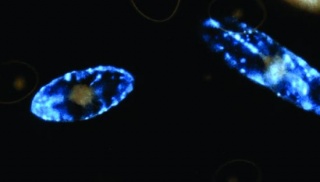
A clear growing container (shallow containers with lots of surface area)Sanitation is necessary so your batch doesn‘t crash. REALLY wash out the grow container, make sure there is absolutely no residue left. Culture flasks -- Sterilized glassware if autoclave is available, otherwise use disposable tissue culture flasks. If you use sterile media and glassware, your cultures will continue forever; every month pour about 1/4 of the culture into some new medium. If you can‘t maintain sterile culture conditions, the cells will last for a few weeks to a month before bacteria overgrow the culture.
Water
- Use purified water as tap water can contain chlorine or other things that might kill your batch.
- No tap water, tap water may contain metal ions that are detrimental to algal growth.
- Temperature: 22° C (Pyrocystis fusiformis 15°C - 25°C)
Sea Salt from pet or aquarium stores
Light and timer
- Indirect natural light is good, but not direct sunlight.
- Illumination with cool-white fluorescent lamps
- Fluorescent light, either cool white or full spectrum, is also sufficient. Avoid incandescent lamps, as they can overheat the water and kill your algae.
- A grow light or an aquarium/terriarium light
- Recommendation of Sciento: We finde illumination under 30-40 watt Fluorescent tube or LED lighting ideal and avoid lighting like halogen bulbs or high wattage incandescent bulbs which tend to emit excessive heat.
- 12 hours of light and 12 hours of darkness every 24 hours
Nutrients (Growth medium)
- Dinoflagellates require nitrate, phosphate, trace metals, and vitamins.
- Growth medium:
- Dino Food
- Dino Refill
- UCSB lab instructions "all the instructions you will need for growing temperate-tropical dinoflagellates in a lab"
A Starter Culture
- A15 Bioluminescent Algae 250ml cultures from Sciento. Planktonic marine, bioluminescent dinoflagellate (Pyrocystis sp.)
Supplier of Dinoflagellates:
- Sciento Manchaster UK http://www.sciento.co.uk/catalog/item/553/
- Empco Holdings Menlo Park USA http://empco.org/edu/index.php/bioluminescent-algae.html
- Sunnyside Sea Farms Goleta California USA http://seafarms.com/html/products.html
- Carolina Burlington USA
Art / Design / Products using dinoflagellates
- Dino Pet Powered by dinoflagellates We like to think of it as lighting in a bottle, only without the pesky thunder.
- Dino Pet at Kickstarter
- Sophia Sobers Heartbeats & Bioluminescence / Necklace, heartbeat monitor is a concept
- Nicola Burggraf She is a product designer and works on the topic of bioluminescence from a design and research perspective.
from biopop.com
from Sophia Sobers
Bioluminescence Erika Blumenfeld
Further links
- Bioluminescent Hourglass using Dinoflagellatets by BioCurious
- Grow Your Own Bioluminescent Algae on Instructables
- Microbial Home Probe project by Philips
HACKING FIREFLIES
Artists working with the topic of firefly
- Marianne Engel
- Francesco Mariotti
- Living Lightning: Critical Making Workshop and Performance
- China Blue
- Robin Meier
- Silke Silkeborg Luciferasenes Leuchten
from Marianne Engel Directly exposed film by glowworms
from Francesco Mariotti The Fireflies Factory
from China Blue Firefly Trees 2011
from Robin Meier Synchronicity
from Silke Silkeborg Achenberg mit acht GW, 19 x 33 cm, Oel auf Holz, 2013
DIY BIOLUMINESCENT DORMICE
still working on it...
Glowing Mouse in HEL
Make your own GlowSticks
Glowing Wurst
see more about it on Randelab
Other experiments
Daphnia GlowStick experiments in Gaudilabs
http://instagram.com/p/sLMnA7Dm9F/?modal=true
GLOWING FOOD EXPERIMENTS
Further links
http://www.funathomewithkids.com/2013/08/safe-and-edible-glow-water-for-baths.html
http://www.funathomewithkids.com/2013/08/edible-glowing-oobleck.html
http://www.funathomewithkids.com/2013/09/edible-glowing-spiderwebs-sensory-play.html
Jellyfish Ice Cream Glows When Licked
Fox News - Glow in the Dark Ice Cream
LUMINOUS WORKSHOPOLOGY
- --- the future is bright ---
- Why the hell should everything glow?
Phototaxis is a kind of taxis, or locomotory movement, that occurs when a whole organism moves towards or away from stimulus of light.This is advantageous for phototrophic organisms as they can orient themselves most efficiently to receive light for photosynthesis. (wikipedia.org)
Phototropism is the movement or growth of organisms in response to lights or colors of light (e.g.- the sunflower) (wikipedia.org)
Heliotropism is the motion of plant parts (flowers or leaves) in response to the direction of the sun. A. P. de Candolle called this phenomenon in any plant heliotropism (1832). It was renamed phototropism in 1892, because it is a response to light rather than to the sun. (wikipedia.org)
TOWARDS A MINI CITIZEN SCIENCE FESTIVAL IN ZURI
starting with experimentations
Event: Läb(e) am Egge | 20. – 26. Oktober 2014
Läb(e) am Egge Corner's College Zürich
Event: Open Art-Bio-Hacking-Labor | 16. May 2016
«Bioluminescence from the supermarket» at studio Baggenstos/Rudolf in the context of the Glühwürmchen Festival, Zürich
OTHER LINKS AND REFERENCES
Lumière Vivante, Dubois 1900
Classic publication on using bioluminescence to lighting: "Sur l'éclairage par la lumière froide physiologique, dite lumière vivante", Raphael Dubois, Issue J. Phys. Theor. Appl., Volume 9, Number 1, 1900, Page(s) 589 - 591
Leuchtende Pflanzen, Molisch 1904
B. Ueber das Leuchten von Würsten
Ueber diesen Gengenstand finden sich in der Literatur nur wenige brauchbare Nachrichten. Das Beste darüber verdanken wir Heller (1). Er erhielt im Winter 1852 in Wien von dem Sanitätsmagister Dr. Stuhlberger mehrere Würste, welche die Polizeibehörde deshalb in einem Verkaufsgewölbe konfiszieren liess, weil die Würste durch ein sehr starkes Leuchten auf ihrer ganzen Oberfläche verdächtig erschienen. Heller gibt davon folgende Beschreibung: "Die Würste waren rohe, sogenannte "Augsburger", 4 Zoll lang und 1 1/2 Zoll dick. Sie verbreiteten nicht im geringsten einen unangenehmen oder gar fauligen Geruch und hatten einen guten frischen Geschmack. Die Füllung bestand meist aus rohem Rindfleisch und wenig rohem Schweinefleisch.
Die Würste waren weich, an der Oberfläche nass und schleimig und trockneten nicht an der Luft. Sie hatten übrigens am Tageslicht keine besondere Eigenschaft. Schon im Halbdunkel leuchteten sie, aber in einem finsteren Raume war auf ihrer ganzen Oberfläche ein sehr starkes, weisslich-grünliches, ruhiges, nicht dampfendes Licht verbreitet, dass man schon bei einer Wurst gewöhnliche Druckschrift recht gut lesen konnte.
Populäre biologische Vorträge Dr. Hans Molisch 1922
The Mushroom Cultivator, Stamets and Chilton, 1984
Sterile Technique and Agar Culture
Water quality (its pH and mineral content) varies from region to region. If living in an area of questionable water purity, the use of distilled water is advisable. For all practical purposes, however, tap water can be used without harm to the mushroom mycelium. A time may come when balancing pH is important—especially at spore germination or in the culture of exotic species. The pH of media can be altered by adding a drop at a time of 1 molar concentration of hydrochloric acid (HCL) or sodium hydroxide (NaOH). The medium is thoroughly mixed and then measured using a pH meter or pH papers. (One molar HCL has a pH of 0; one molar NaOH has a pH of 12; and distilled water has a pH of 7).
After thoroughly mixing these ingredients, sterilize the medium in a pressure cooker for 30 miutes at 15 psi (equals 103 KPa). (Pressure cookers are a safe and effective means of sterilizing media provided they are operated according to the manufacturer's instructions). A small mouthed vessel is recommended for holding the agar media. If not using a flask specifically manufactured for pouring media, any narrow necked glass bottle will suffice. Be sure to plug its opening with cotton and cover with aluminum foil before inserting into the pressure cooker. The media container should be filled only to 2/3 to 3/4 of its capacity.
Place the media filled container into the pressure cooker along with an adequate amount o water for generating steam. (Usually a 1/2 inch layer of water at the bottom will do). Seal the cooker according to the manufacturer's directions. Place the pressure cooker on a burner and heat until ample steam is being generated. Allow the steam to vent for 4-5 minutes before closing the stop cock. Slowly bring the pressure up to 15 psi and maintain for 1/2 hour. Do not let the temperature of the cooker exceed 250 °F. or else the sugar in the media will caramelize. Media with caramelized sugar inhibits mycelial growth and promotes genetic mutations. A sterilized pot holder or newly laundered cloth should be handy in the sterile lab to aid in removing the media flask from the pressure cooker. While the media is being sterilized, immaculately clean the laboratory.
http://www.amazon.com/The-Mushroom-Cultivator-Practical-Mushrooms/dp/0961079800
Nice Poster
Poster designed by Seattle-based artist Eleanor Lutz
